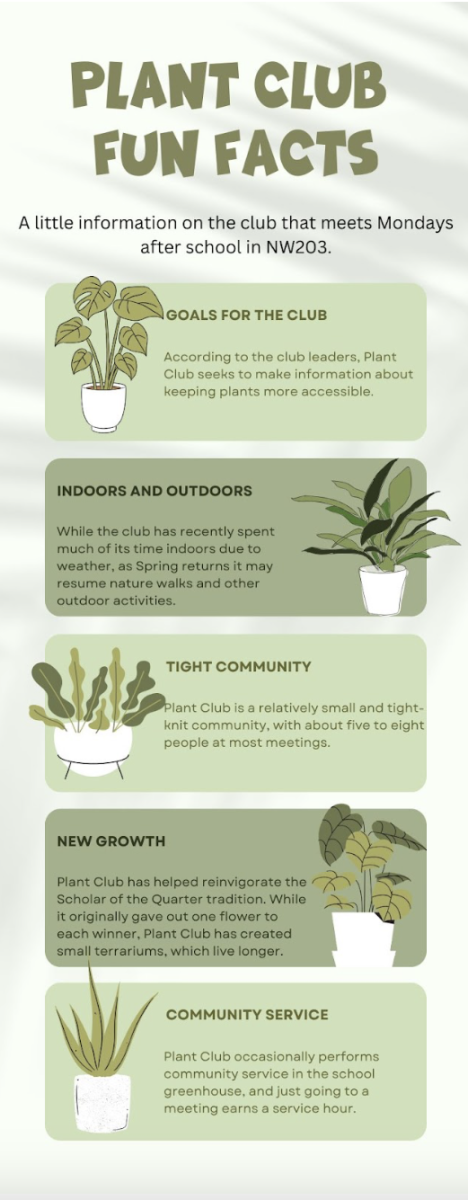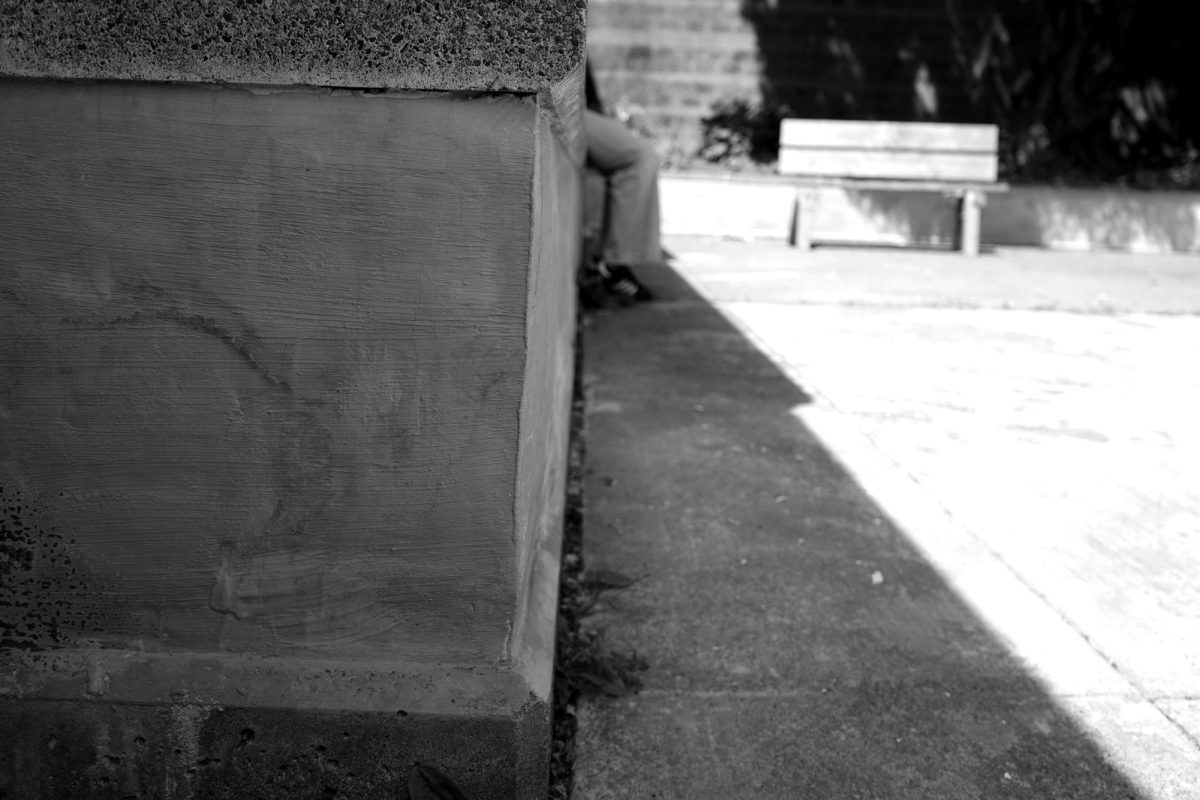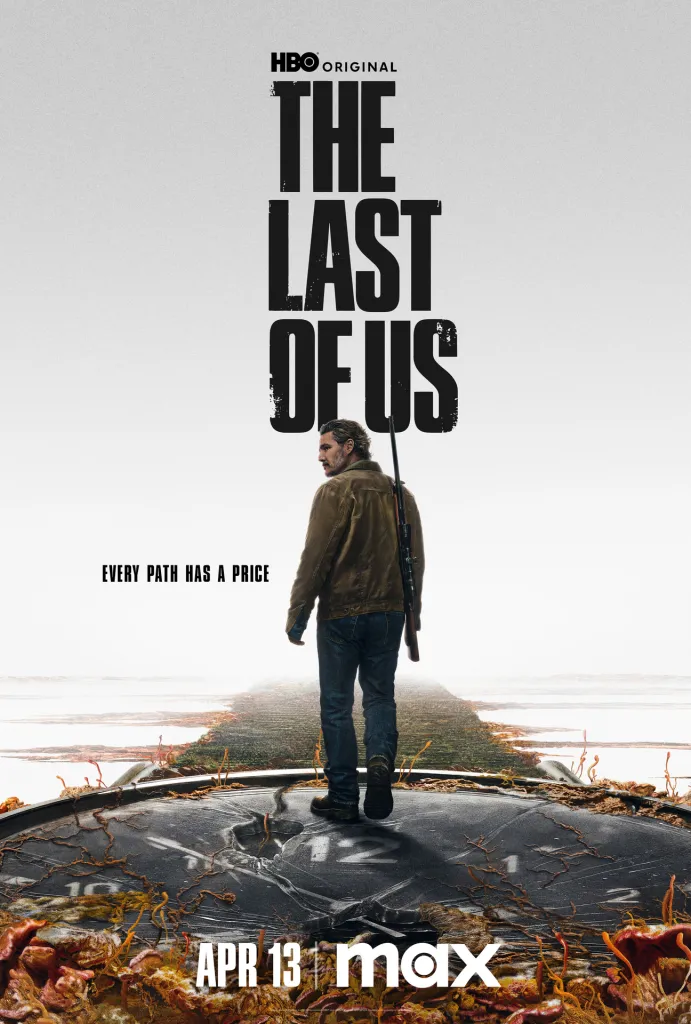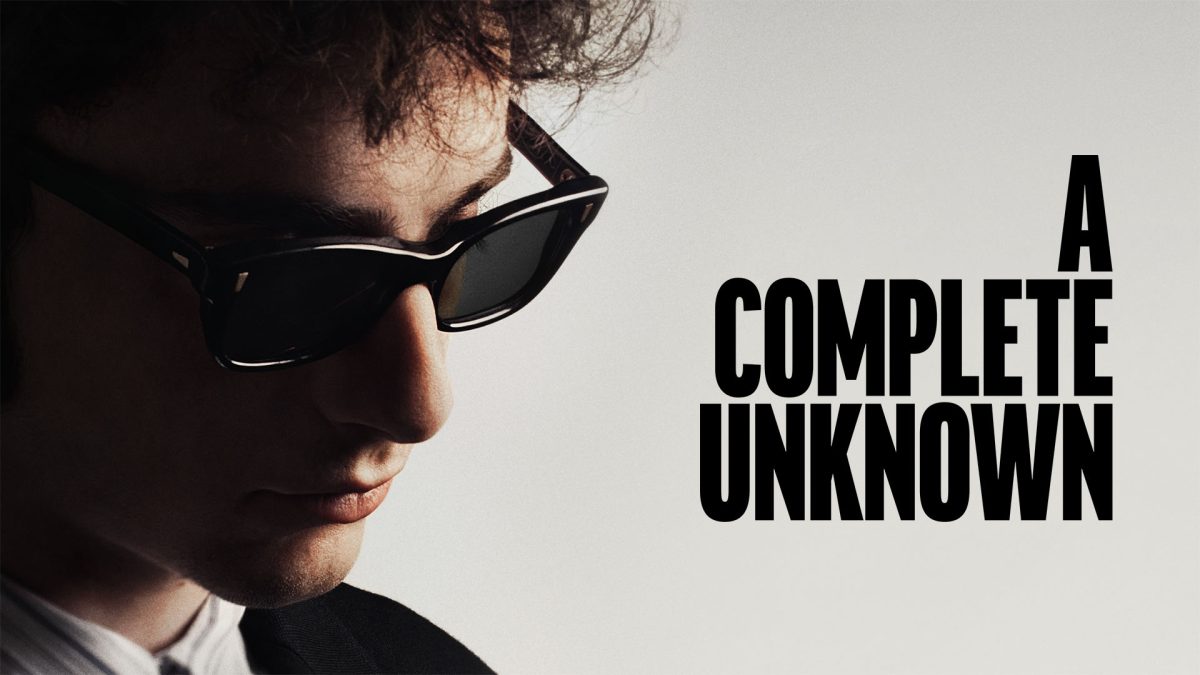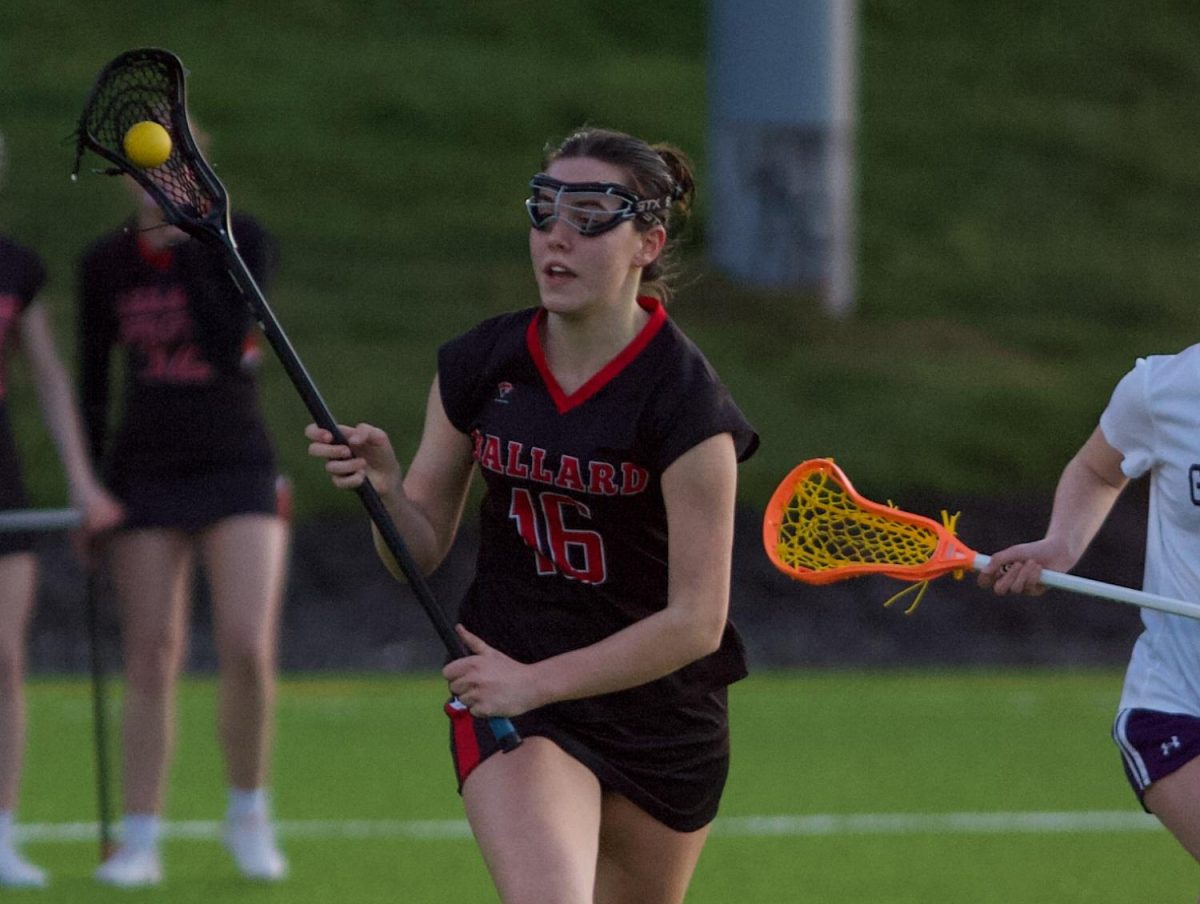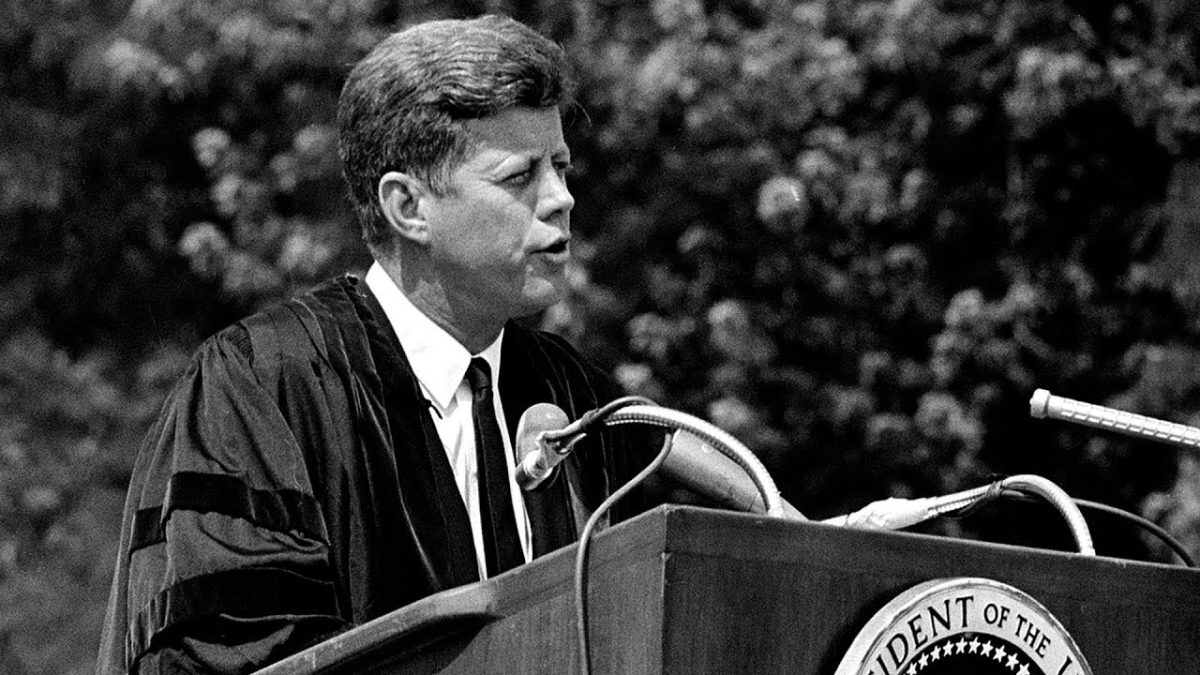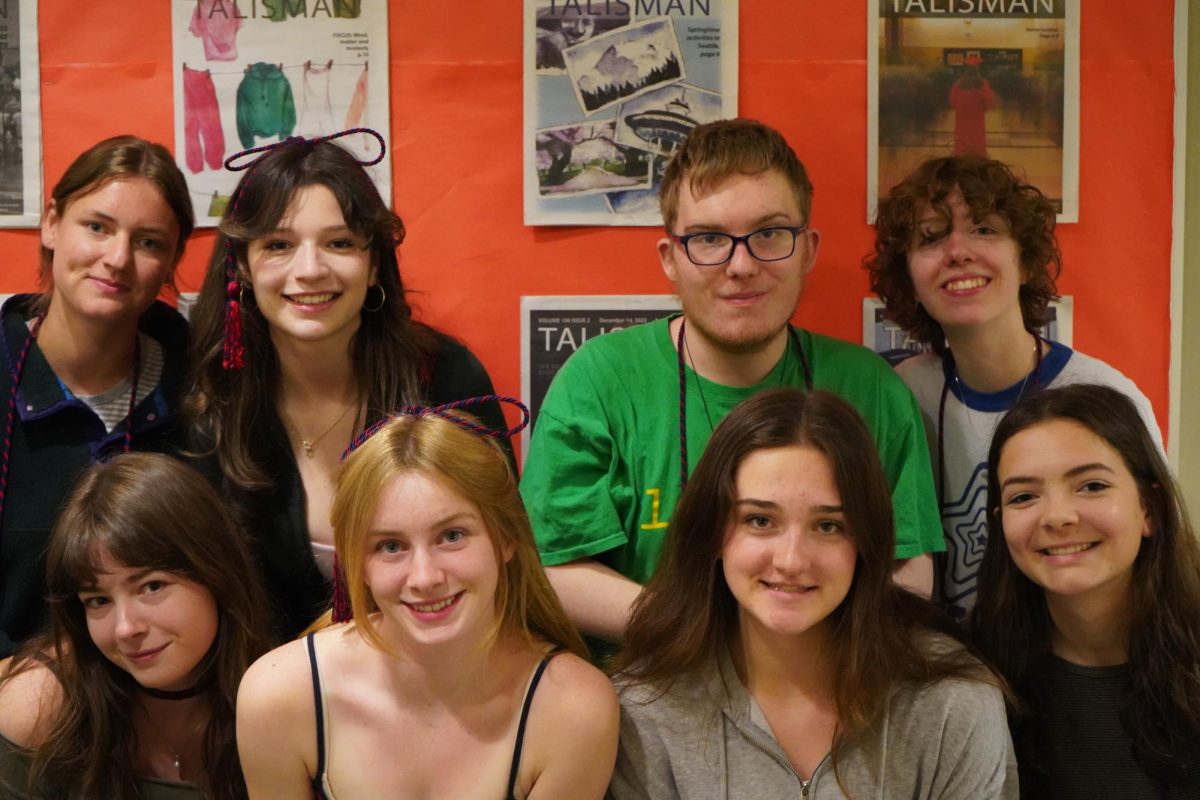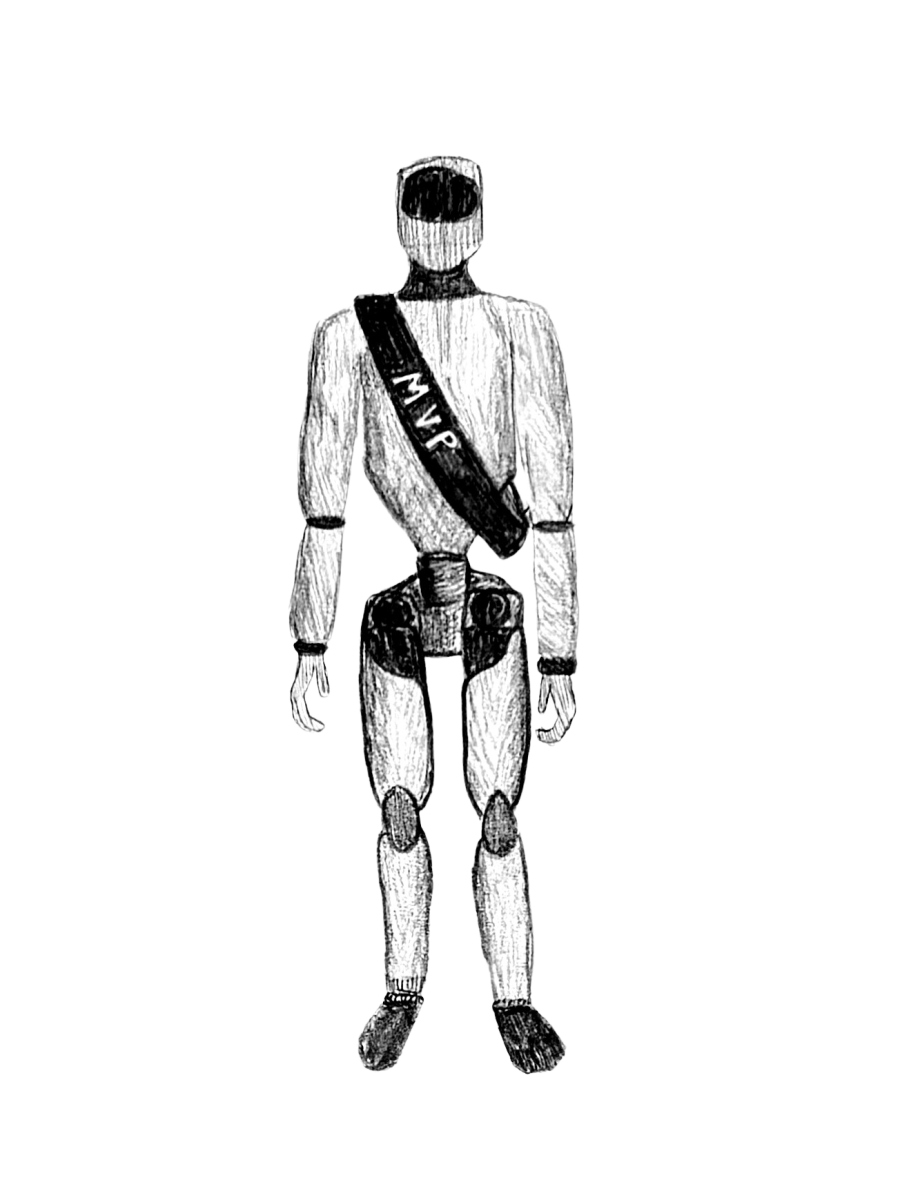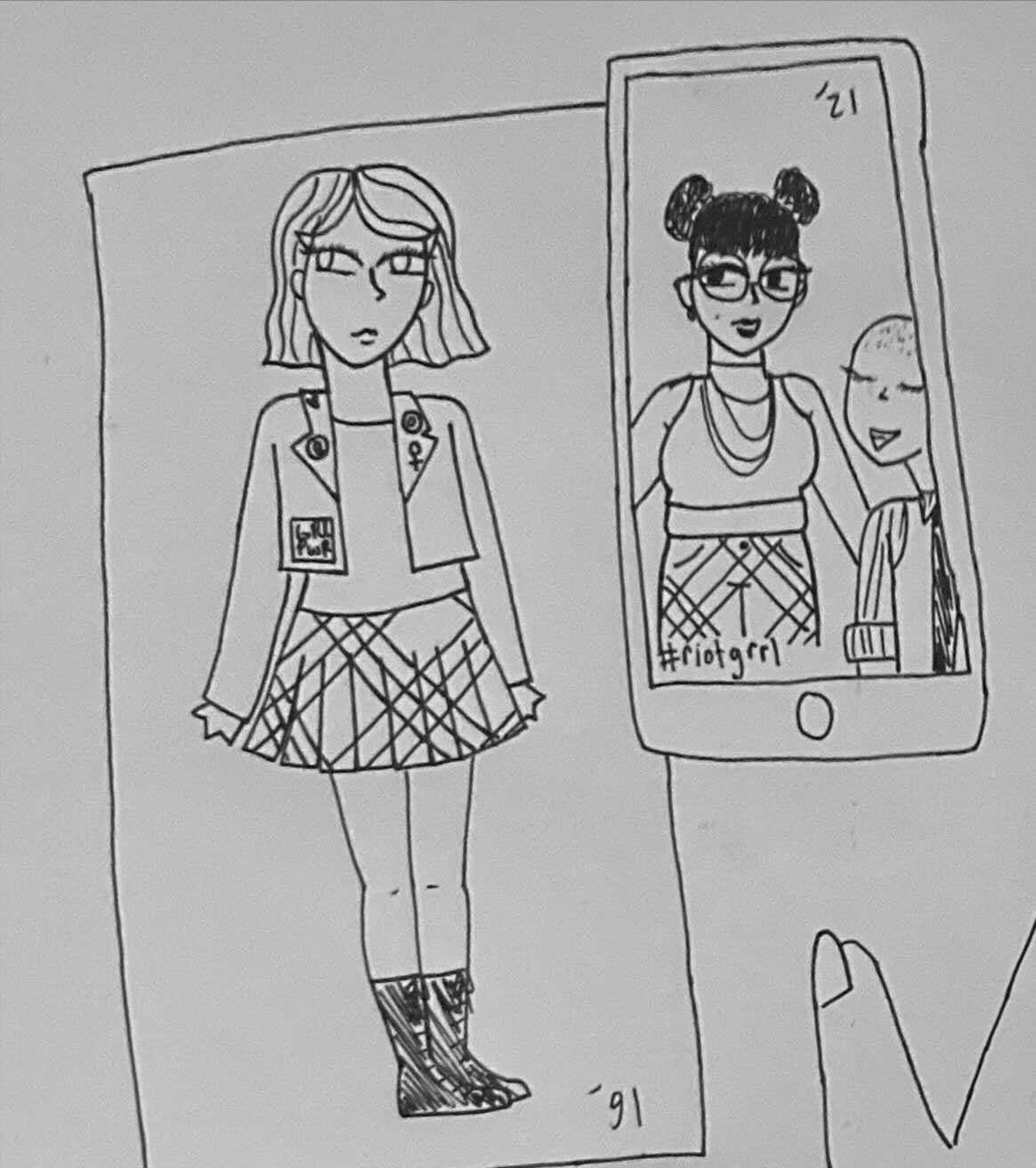Internet users reflect on the good and bad of the original movement
Originally published December 2, 2021 by Maisie Clunies-Ross, Staff Reporter
Cartoon by Maisie Clunies-Ross.
Many past cultural phenomena, everything from Twilight to Tumblr “Scene” style, are having a resurgence on TikTok. Along with revisiting past crazes, many retro trends have gained traction online, such as the Riot Grrrl movement. The darker alternative style combined with the movement’s feminist values make it appealing to Gen Z.
Along with a rise on TikTok, recent movies like Netflix’s Moxie have brought the Riot Grrrl Movement into the forefront of conversation once more.
For those who are unfamiliar, the movement was started in Washington in the early 1990s by punk bands like Bratmobile and Bikini Kill to resist sexism in the punk scene. The music and zines expressed anger at everyday sexism and oppression in a raw DIY way that appealed to many, leading to the movement’s growth.
This led to an increase in women in punk and the creation of many feminist zines and songs, more female centered spaces and a distinct style. Even outside of those initially involved in the punk scene, the Riot Grrrl movement helped many women learn about feminism and find empowerment with the movement playing a pivotal role in third wave feminism.
It’s undeniable the positive impact the Riot Grrrl movement had on many women. The problem arises when you examine which women the movement helped.
The answer is the same as always: white women. Middle to upper class, cisgender, able-bodied, white women. Supposedly feminist white women pushed people of color aside, exactly the same way men had done to them, all while maintaining their counter-culture feminist front.
Some women, most notably Courtney Love, grunge icon and frontwoman of Hole, were openly racist. Most didn’t acknowledge their own privilege at all.
Tamar-Kali Brown, a Black woman involved in the 90s punk scene said, “I didn’t think it was exclusive, but it didn’t feel inclusive to me…It just felt super white.” Brown went on to start Sista Grrrl Riot, a space for Black women outside of the male and white dominated punk scenes.
Queer women were relatively more central in the movement, because of the rise of queer-core, another subgenre of punk, and the proximity of the two movements.
However, there was no documentation of any openly trans musicians in the Riot Grrrl Scene and according to Julia Downes in her article,“The Expansion of Punk Rock: Riot Grrrl Challenges to Gender Power Relations in British Indie Music Subcultures:” “The ‘check your gender on the door’ policy caused problems… enforcing an essentialist model of gender that discriminated against queer gender presentations.”
Gender essentialism is the belief that people are inherently feminine or masculine based on biology, which is incredibly transphobic and, in the case of some Riot Grrrl spaces, discriminatory to cis women who don’t present in a traditionally feminine way.
Discussions of disability and class were both so sidelined there is little to no mention of either in articles on the original Riot Grrrl scene.
The problems with Riot Grrrl feminism are indicative of a larger problem in mainstream feminism: a focus on individual achievement over intersectionality.
Emia Demir summed it up perfectly in her article: “Riot Grrrl: A Critique of 90s Punk Feminism.” “Riot Grrrl seemed to nurture this problematic idea that if a woman is strong and opinionated then she is, by default, the poster girl of feminism, regardless of whether her ‘feminism’ ignores racism, transphobia, ableism, classism and so on,” Demir said.
Mainstream white feminism focuses on the “female” struggle, without recognizing the intersection of other marginalized genders and identities within that struggle or the way these identities compound hardship and discrimination. Solely focusing on so-called “women’s issues” without thinking about the complexity of those problems is irresponsible and not truly feminist.
The exclusion and lack of intersectionality are the main problems modern feminists and some of those involved in the Riot Grrrl resurgence of today aim to fix. While acknowledging the problems of the past is far from good enough, it’s a necessary first step to building a stronger, more inclusive movement.
Maddie Peletsky and Koren Dalipe, two prominent figures in the TikTok Riot Grrrl community, have been drawing more attention to forgotten people of color in the punk scene. The nature of social media has also allowed people of color, LGBTQ+ people and disabled people to build large followings and create safe spaces of their own.
Tamar-Kali Brown, the same woman who was quoted earlier as having felt excluded by the original Riot Grrrl movement, is hopeful about the current conversation and the new generations take on it.
She explained in Billboard’s article: “Can Riot Grrrl TikTok Re-Imagine a Flawed Scene?” “I definitely see space for authentic critical reflection and conversation,” Brown said.
The Riot Grrrl Resurgence of today is far from perfect. There are many who blindly idolize Riot Grrrl’s past and those who believe fourth wave feminism has solved all previous problems without recognizing that acceptance without critique is how those issues began in the first place.
That being said, LGBTQ+ people and POC are more at the center of the resurgence. The term Riot Ghoul has been coined to describe and include a wider variety of genders in the movement.
There’s something to be said for how one of the biggest TikTokers in the movement today is Filipana-Chicana Koren Dalipe.
And in regards to inclusion, the young Asian American and Latina punk band the Linda Lindas have spoken about feeling empowered by the current punk scene instead of being sidelined and excluded.
“Punk is anything we want it to be,” said Eloise Wong, the Linda Linda’s vocalist and bassist in an interview with the Guardian. “I like ‘do-it-yourself’ because it’s whatever you feel like.”
This is reflective of a greater attitude in the Riot Ghoul movement: a willingness to put in the work in improving Riot Grrrl to create an inclusive feminist punk space for all.


